Marathon Sportswear is the Piko family’s legacy: an impressive state-of-the-art, high-volume screen printing business just outside Chicago.
CEO Jim Piko set aside some time for us to visit Marathon’s incredible production facility, giving us an in-depth tour of the facility and discussing the trials and tribulations that a large screen printing business like Marathon faces.
Marathon has collected amazing customers in the past 30+ years, printing for more than 1,500 different marathons, 5Ks and 10Ks, and dozens of other races each year – creating a loyal list of top-notch clientele.
So what’s next for a shop this large? Interesting things: automation, improvement, and more growth.
“We want to increase our customer base and generate our own new customer niches,” Jim says.
When you’re at the scale Marathon Sportswear is (millions of shirts printed a year), you can define your own niche. But every screen printing shop struggles with the same issue: picking a customer and going after them.
Marathon isn’t on an easy path – they’re fighting hard to improve their processes, boost their sales, and keep their screen printing both modern and affordable – and they, perhaps surprisingly, share a lot of the problems that plague screen printing businesses of any size.
Did we mention printing for runners is difficult? High-volume, firm deadline, tough apparel. Marathon have mastered their craft.
“My dad started Marathon Sportswear in our garage in Bevery, IL in 1980”
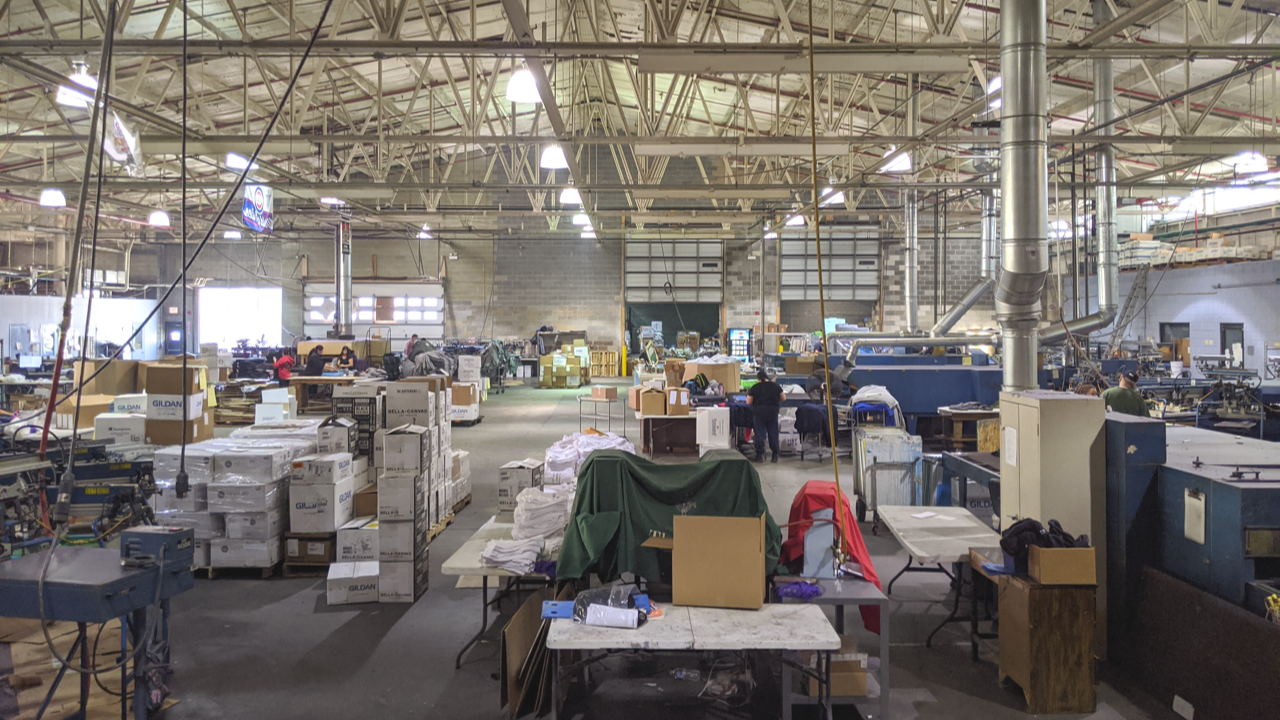
Started in 1980, Marathon Sportswear came from a simple insight: Jim’s dad loved to run, and he’d get a t-shirt at every race. Jim says, “He thought, ‘This is something I can capitalize on.’ So [business partner] Andy Devine and my dad grew the business into something really special.”
What planted the seed for success? Marathon Sportswear is a family business.
The entire Piko family has spent time at Marathon, and that backbone of trust and reliability helps Jim tackle problems every day. “5 of the 6 children work here now. You can count on the family members.” With approximately 75 employees, the smart business foundation the Piko family created has allowed them to grow Marathon into a multi-million dollar screen printing operation.
When Jim became CEO, he spearheaded an initiative to modernize the shop. Now, Marathon has leapt ahead, printing thousands of t-shirts every day for high-profile customers – retail and contract alike. “We’re about 55% direct-to-customer, 45% contract,” Jim says.
Running two shifts a day with seven M&R automatic presses in operation, Marathon is pushing full-steam ahead to meet demand, hit strict deadlines for big events, and improve even further as a business.
“5 years ago, we could do 100 screens a day. Now we do 300 screens”
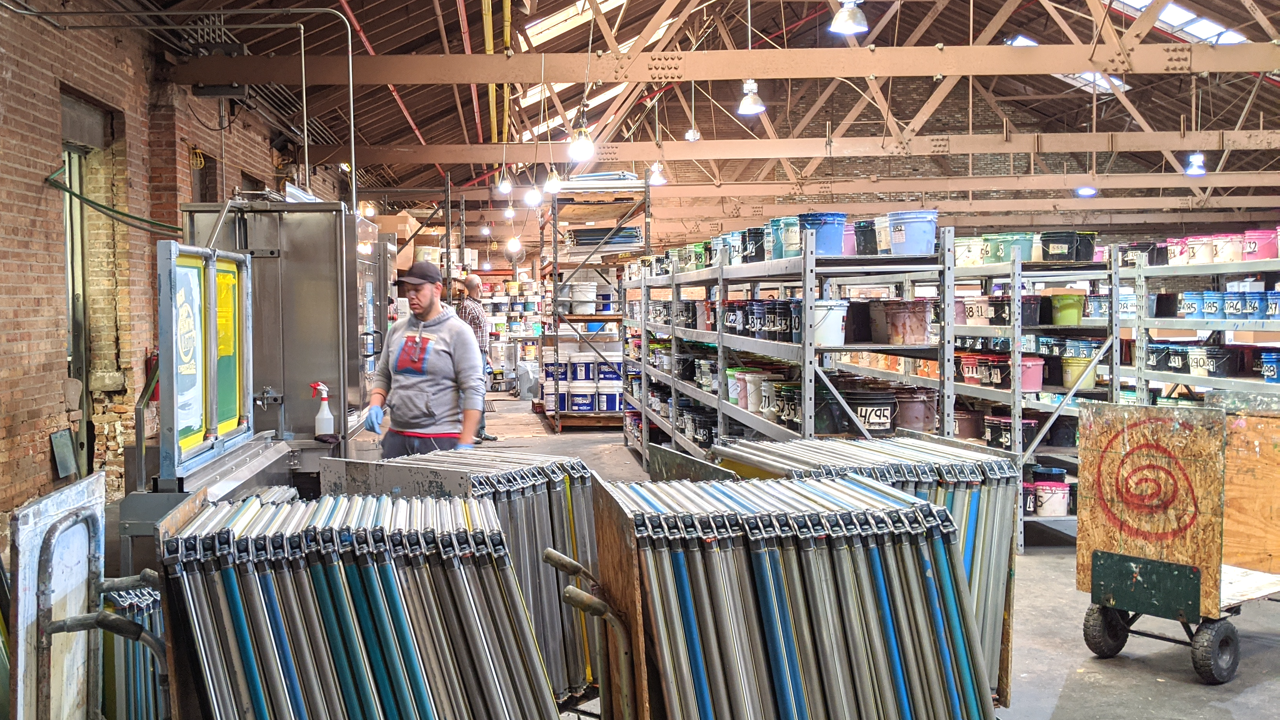
If you’ve ever upgraded the screen printing equipment in your shop, you’ve probably learned an important lesson: bottlenecks in your production process can’t be eliminated. They merely move from one location to the next.
If you buy a bigger press, you’ll need a bigger dryer. If you get a bigger dryer, you’ll need to burn more screens to keep up with the press. If you need more screens, you’ll need to clean and reclaim them faster.
This cycle of growing and then outgrowing your equipment is obvious at Marathon: they have a massive operation, yet they’re still limited by how quickly they can clean and reclaim screens.
“We can reclaim 120 screens in 8 hours here. But we’re getting 300 burned. So we need [more equipment] to keep up,” Jim says.
There is always some operational slack and redundancy at a place like Marathon. Even though they have 9 automatic presses, they really only operate 7 of them at a time. The two extra presses are there as backup presses. Functionally, any team member can hop on any press in the shop and expect the same basic experience. This means downtime isn’t catastrophic – just move to a backup press and get moving.
“Does automation eliminate a job? In the short-term, yes. But in the long-term?”
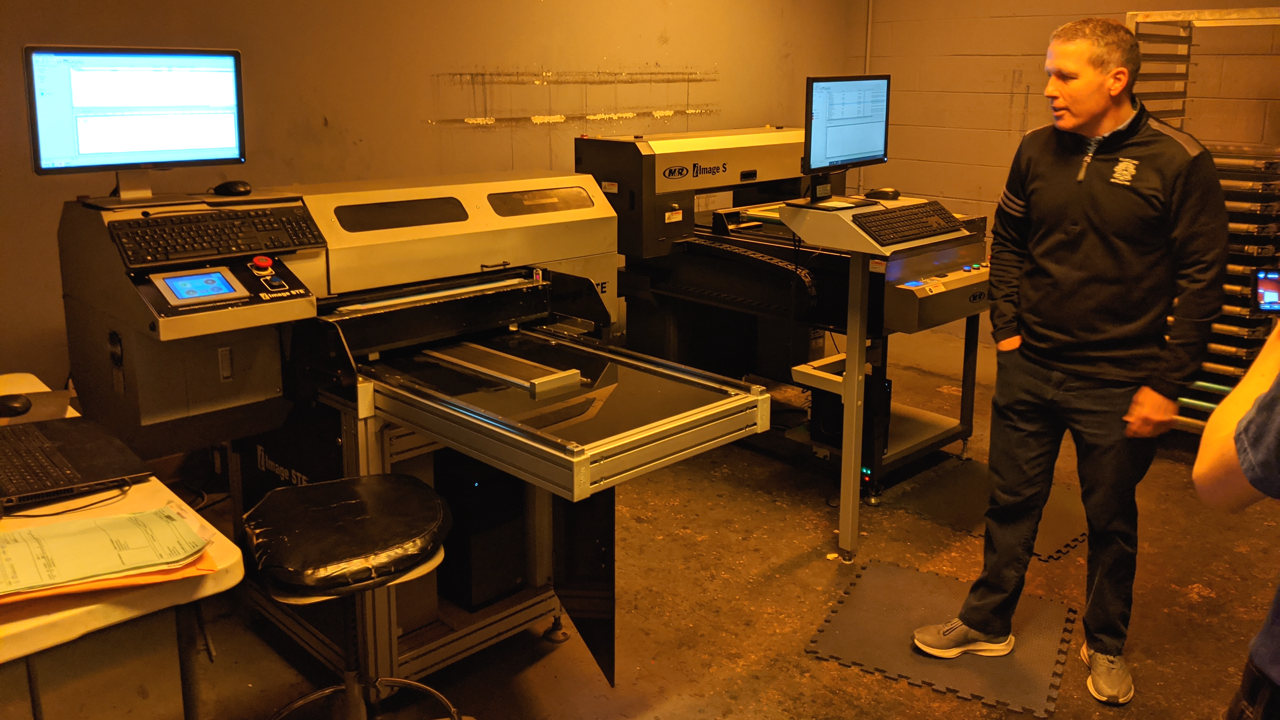
Automation, at the scale of a screen printing shop like Marathon Sportswear, is a necessity. The work is repetitive, challenging, and precise – so eliminating excess tasks and streamlining daily work is mission-critical.
Lots of screen printers are afraid of automation. This can be a legitimate fear – automation does reduce the number of hands needed in a screen printing shop, at least initially. But there’s something more important happening when you automate tasks: you’re likely automating some of the worst tasks in your business.
Does automation eliminate a job?
In the short term, yes, it does. But in the long term, we grow as a business. We reposition the full-time employees. We train you. Then, a year or two later, we’re going to hire several people for good production jobs.
Jim points out that as you grow, you actually hire more people because of automation. The tasks that are automated – tasks like washing and reclaiming screens – are not desirable tasks, and are typically high-turnover positions with low pay (despite their essential importance to entire process).
Jim has focused his investment in automation in two areas:
- Pre-press: Screen exposure and registration
- Jim has two M&R i-Image computer-to-screen units and utilizes the Tri-Loc registration system
- Post-press: Screen reclaiming and preparation
- Jim has invested in an automated screen reclaiming system
Jim sings the praises of M&R’s i-Image computer-to-screen system: “The i-Images have been the greatest advancement since I’ve been here. Not only is it a quarter of the time to burn a screen, it registers them perfectly with the Tri-Loc.”
We’ve repeatedly seen a computer-to-screen or direct-to-screen system create huge efficiencies in screen printing shops. So why two i-Image systems? “Well, if one goes down, you’re in trouble,” Jim says.
Computer-to-screen and direct-to-screen systems are genuinely miraculous technology. The exposure, registration, and reclaim processes are three of the only areas in screen printing where spending money yields immediate gains in efficiency.
Editor’s note: Check out how Douthitt has used Printavo’s QR codes to make pre-press screen preparation super easy.
Tips and lessons learned: Marathon Sportswear
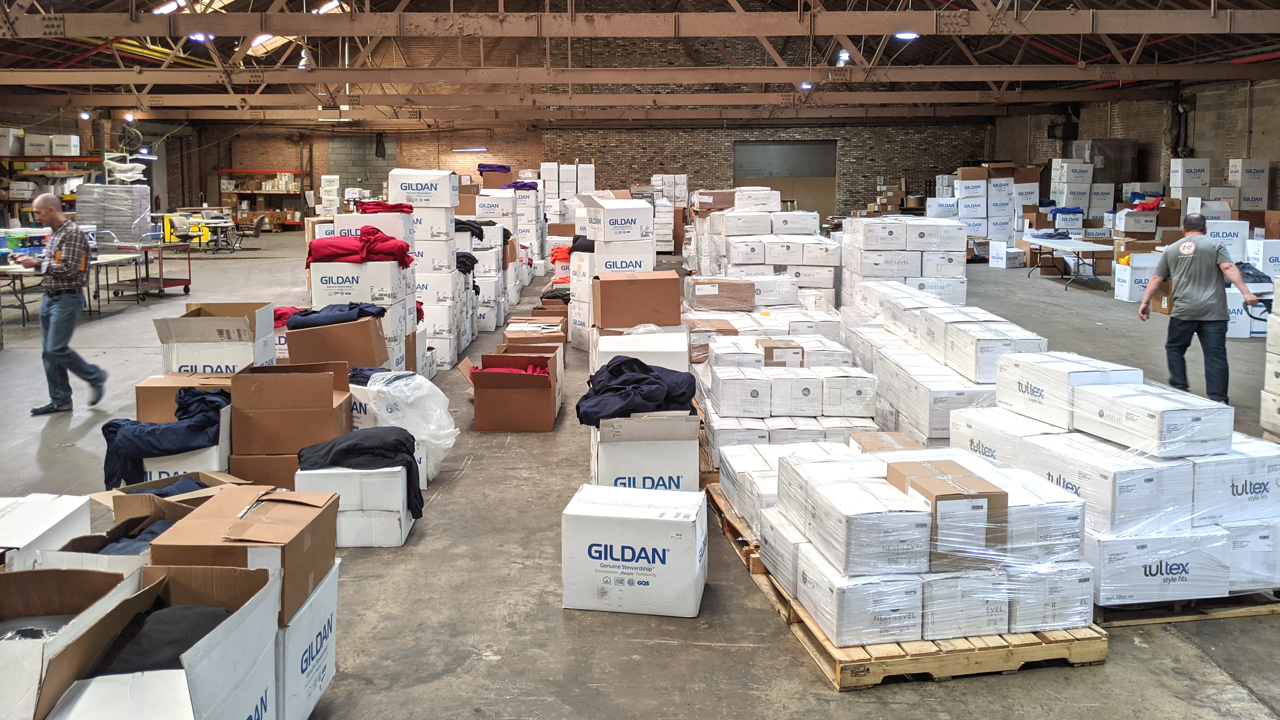
Jim Piko has picked up some hard-won knowledge about screen printing during his career.
Here are Marathon Sportswear’s biggest tips and lessons learned from more than 30 years in the screen print industry:
- Find equipment and technology that fits your screen printing. Instead of trying to fit your business around your equipment, find the screen printing gear that actually fits the work you do and double-down on investing in it.
- Manage your staff humanely. Marathon only grows because of their low turnover and long-serving staff. This stems from solid management and great process.
- Keep more printing capacity than you need. As an operation that’s set up for retail and contract printing, Marathon has to keep additional capacity. This means two i-Images, multiple presses, backup garments, and a way to always craft a plan B.
- Create your own customer niches. Marathon is an example of a shop that exists because they created their own niche: running and races. As they grow, they’re beginning to craft even more niches (like ink that only appears when wet, targeted at gyms and exercise clubs).
- Put the screen printing process at the center of your operations. While Jim didn’t dive into the Marathon process on video, we talked extensively about their ongoing efforts to improve communication, process, and alignment within the shop.
- Improve your business – or stay stagnant. Jim overhauled Marathon’s operations, implementing real systems and practices that keep everyone organized. That effort – though difficult – continues to pay off.
Every bullet point above is an area for ongoing self-improvement and self-challenge in a screen printing shop.
Putting thousands of garments through your shop every day like Marathon Sportswear does means everything must be dialed-in – but it also means you must try new and improved processes to gain efficiency.
“You can’t just run the machines all day without making a profit”
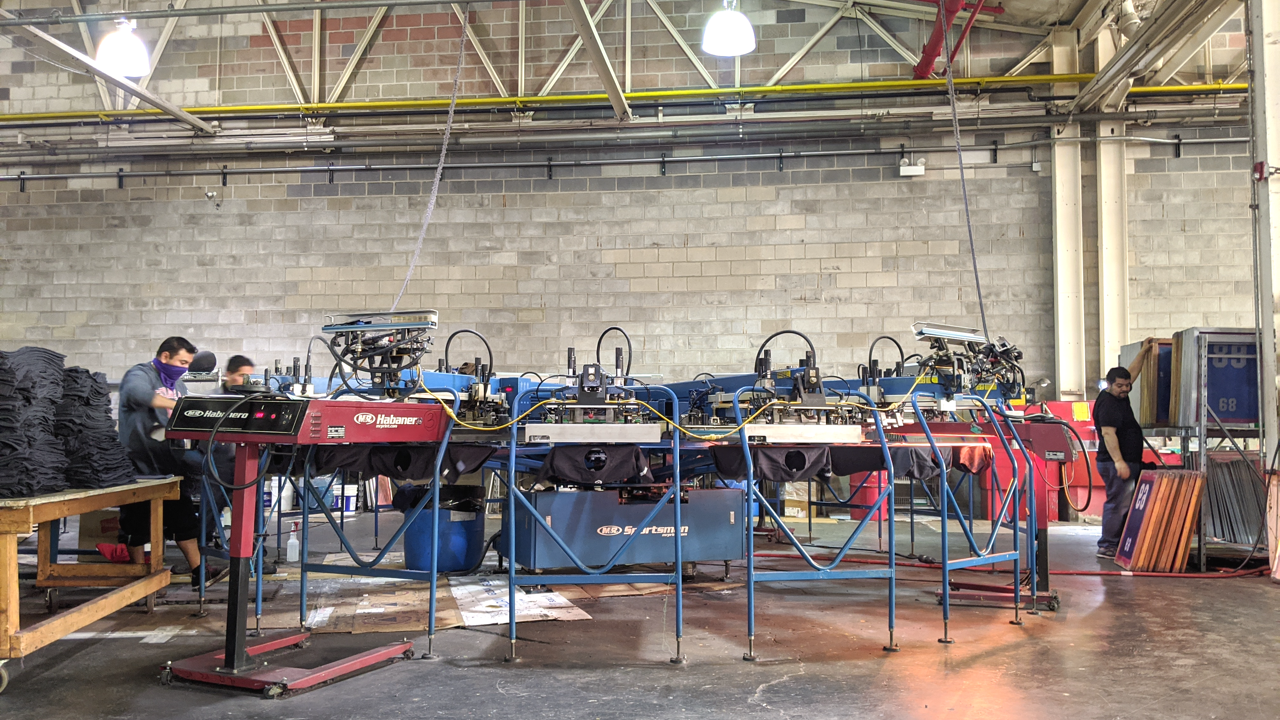
Despite all of the automation, it’s obvious that Jim keeps one thing top-of-mind: people.
“The running community is wonderful,” Jim says. “We have a low turnover rate. We have nice people in management positions. We have great production managers that do a really good job. It’s not perfect, but there’s not a lot of re-training.”
Jim was candid about the impact Marathon Sportswear has had on peoples’ lives – he’s proud to offer stable employment alongside opportunities to earn a truly good wage doing interesting work.
Marathon looks intimidating. It’s a big shop, printing thousands of t-shirts every hour. A lot is on the line, and there’s always something happening.
But the overall environment is relaxed. For its size, Marathon is surprisingly quiet and calm. The staff is totally focused. There’s no sense of chaos: everything is in its right place, clean, usable, orderly. That’s a testament to Jim’s leadership, his team’s love for their work, and the mission-focused way that Marathon Sportswear operates.
After all, screen printing is more like a marathon than a sprint: slow, steady, incremental progress over a long period of time wins the race.
Thanks to Marathon’s team and CEO Jim Piko for taking time out of a busy schedule to chat. We are always looking to large shops like Marathon to learn about process, ways to help, and what the biggest players in the industry are thinking about.
Jim was an open book with us, answering questions for well over an hour off-camera and showing us the details of his operations in a totally honest way.
Perhaps most surprisingly, the problems that a shop like Marathon Sportswear (with its millions of shirts printed each year) look similar to the problems that smaller shops face: staffing, communicating with customers, finding new customers, and choosing the right jobs that make enough money to keep the business going.
That’s what we mean by automation with a human touch. No matter how high-tech your shop is or how many presses you have, it all comes back to the people that make it happen: your customers, your employees, and the huge network of people you touch by running a screen printing business. Check out Marathon Sportswear on the web!
Printavo’s team is always looking to visit print shops, tell their story, and learn from their unique experiences. It’s our favorite thing to do: visit the shops that inspire us to make Printavo even better.
- A Small Print Shop is Denver’s clean, organized, and hardly small print shop
- Tonic Studios in Columbus generated some controversy with their take on pricing
- Shout Out Loud Prints went from 70+ hours a week to sanity (and he shares how)
- Trust Printshop is lean, clean, and super inspired
Want us to visit your shop? Drop us a line. We’d love to come by.
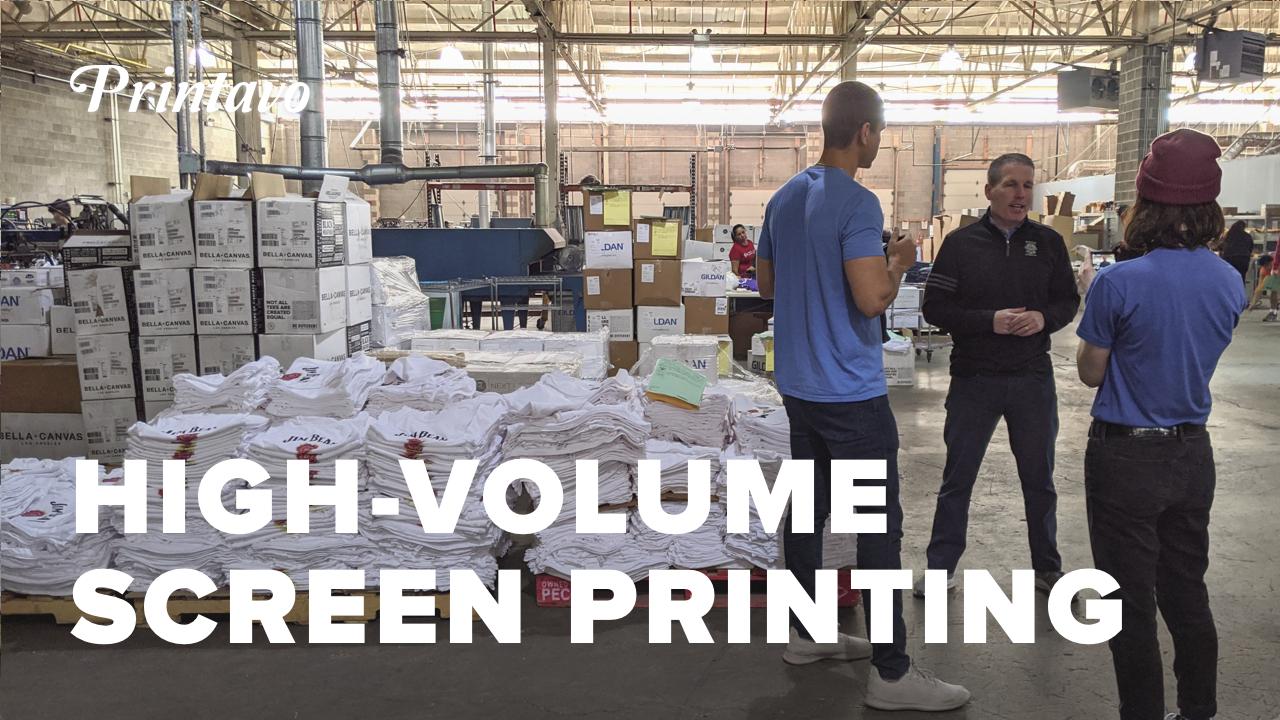
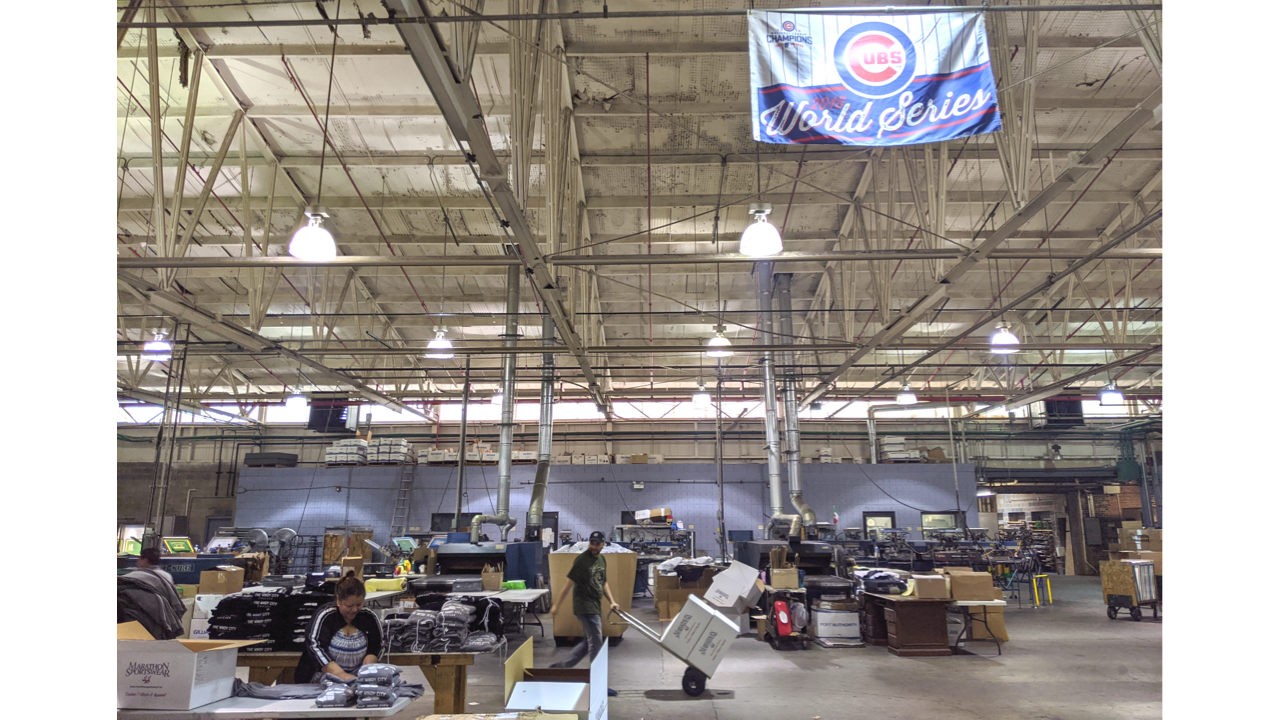
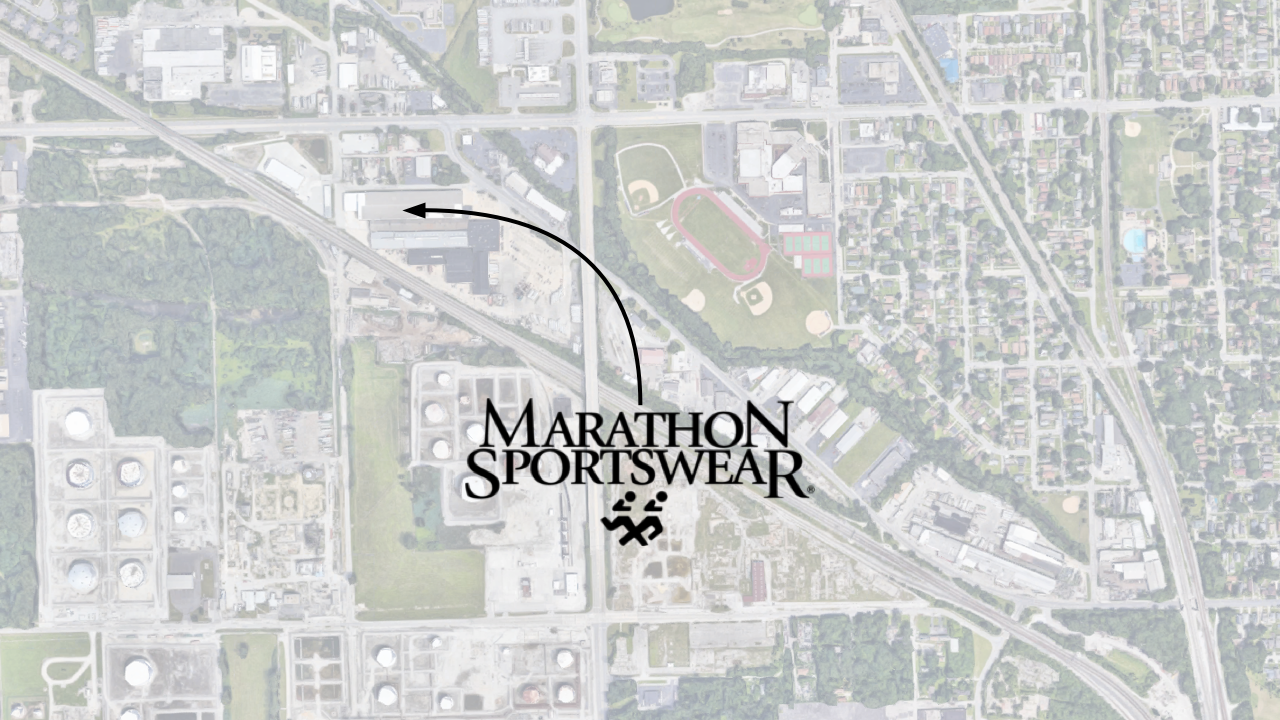

0 Comments